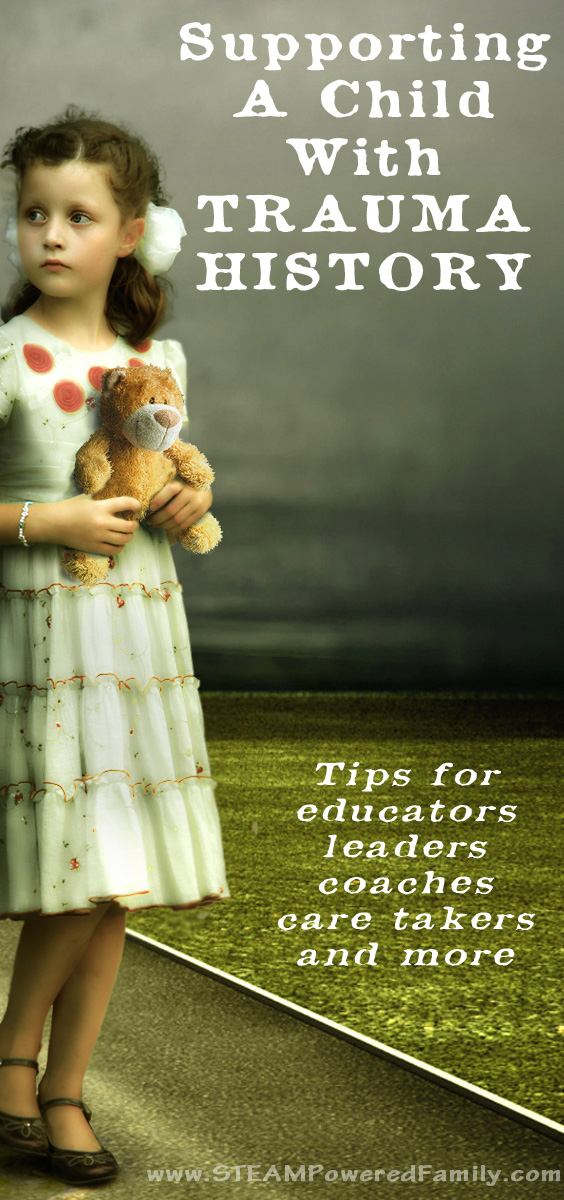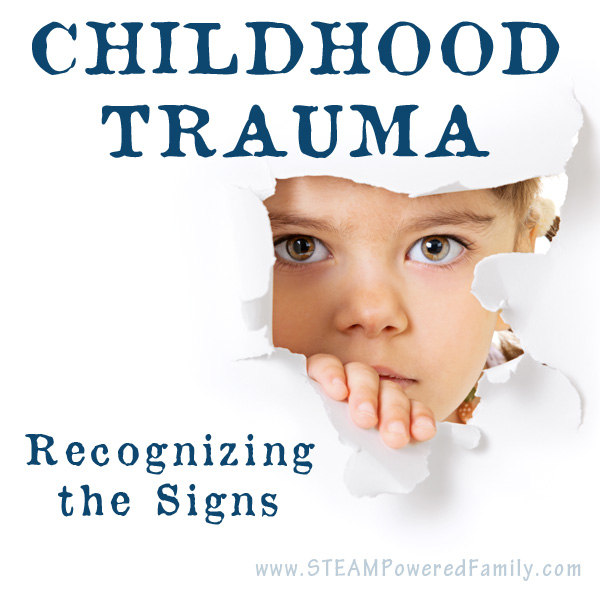Tips For Supporting A Child With Trauma History
Supporting a child with trauma history is not easy or straight forward. Trauma exposure changes everything for a child. It changes the way their brains work, the way they perceive the world, and the way their instincts react to stimulus. As a person in a trusted position with these children, either in a school environment, sports team, scouts troop, tutor or any other leadership role, there are certain things you can do to help them learn and thrive.
HELPING A CHILD WITH A HISTORY OF TRAUMA

Disclaimer: This article may contain commission or affiliate links. As an Amazon Influencer I earn from qualifying purchases.
Not seeing our videos? Turn off any adblockers to ensure our video feed can be seen. Or visit our YouTube channel to see if the video has been uploaded there. We are slowly uploading our archives. Thanks!
Educate yourself
Read up about trauma. Most of us were raised to believe children are “too young to remember”, or they will “outgrow it”, or that these are bad children making a conscious decision to be difficult or disruptive. It’s important you read up and learn what is really happening so you can see beyond the behaviours to the child, and trauma, that is at the root of what you see. This will allow you to truly offer effective support for a child with trauma history.
Turn to the specialists
This builds on educating yourself. Many schools, governments, and organizations provide access to specialized supports, not just for the students but for the adults working with these students; use these resources. Many families also have their own support network of professionals. Ask about these resources and if they can provide information specific to the child and their current therapy techniques, and how you can support the child’s healing and therapies. There are also some fabulous books available from trauma specialists that will help you understand the impacts of childhood trauma.
Provide structure, consistency and routine
This is a hard one for me. I hate feeling like we are living our lives with every moment scheduled and plotted out for us, but it really does make things easier for these children. They need the reassurance of knowing what is going to happen in 5 minutes, one hour, one day or even one week from now. Now I don’t mean schedule every moment so you are rushing about, but instead schedule times for work, relaxation, exercise, etc. Ensure bedtimes and meal times are consistent and routine. I found that after a while of having intense structure my child become much more comfortable with changes to our routine. Which brings us to the next tip.
Be gentle with transitions and change
Give warnings for transitions, if that is what the child needs. Some children need to know about change as soon as possible, but I found that my child did best with only a short heads up window. If I told him about a change too early he would fixate on it, especially if it was a big break in routine or something brand new, and he would be unable to focus on anything else. Learn from the child what works best for them. Also, if anything loud or startling might happen, perhaps a stranger is visiting, a loud noise like a fire drill, or something else that might startle or cause stress, prepare the child ahead of time, or make the choice to remove the child if the experience could be more damaging than helpful.
Choice is a powerful motivator
A child who has experienced trauma did not have a choice in the situation and often experienced a significant lack of control around the trauma incidents. These children crave control and it can often be seen as manipulative behaviour if they are not given enough outlets to exercise control over their experiences. Provide safe opportunities for them to make their own choices, perhaps at meal time they can pick between two different options, or let them chose a book, or a place to sit in a room. Be cautious though in providing too many options or choices as this can become overwhelming for certain children. Work towards finding the right balance for each child’s needs between structure and choice (control) when supporting a child with trauma history.
Discover their passions, strengths, talents and interests and build on those
Everyone has their “thing“. It’s the things that give the person a sense of joy, happiness, strength, confidence. Spend time discovering what that is for the child and encourage their development in that area. Our child loves to play ball sports, so we often used ball games to learn patterning, practice language skills, learn social skills, to regulate him, and more. Playing ball gives him a positive self image and wonderful self-confidence. When he is playing ball he is no longer the different child, the struggling child, he is simply a great ball player.
Make a Safe Place
This can be an actual place or a portable tool kit, but create a place where the child can go, whenever they want with no repercussions. If the child starts to feel overwhelmed, triggered, over stimulated or lost, they can go to their safe place to help them calm down and regulate themselves again. Empowering the child to use a safe place with no repercussions is a great step toward them learning to recognize what their body needs and learning proper self awareness and self care. In the safe place you can provide items that will help them regulate. A certain book, toy, blanket, or fiddle toys such as Lego, puzzles, colouring sheets, or play dough, all can be helpful in regulating a child. Also consider including a water bottle and healthy snacks. The Chaos and the Clutter has an excellent tutorial on building an Anti-Anxiety Kit that would work well in a safe place.
There are Good Days and Bad Days
One of the most confusing aspects of working with children who have undergone trauma is that their abilities vary almost daily. Some days they will seem to be doing great and understand everything you teach, but other days they will seem completely shut off, or regress years in their ability. This is normal and to be expected. Allow space and time to deal with these changes and variations in their abilities. Focus on teaching to where they are at on any particular day, or moment. Regression can be especially evident around the anniversaries of a trauma event.
Eat healthy and drink plenty of water
I’ve noticed a trend in some groups to provide unhealthy snacks, filler foods, and sugary drinks. Instead provide healthy food options and always have water available. For some children their traumas are around neglect and hunger can be a big trigger since infants and small children are so reliant on adults for their food. Providing access to drinks and snacks can help eliminate hunger and thirst as a trigger. This is true for not just the child but you too. If you are hungry or thirsty it can be hard to be as patient and as focused as the child needs. Which ties in perfectly with the next tip.
Practice Self Care
Just like we are trying to teach these children to self regulate and self care, we also need to practice it ourselves. Take care of yourself. As a trusted adult in the child’s life they will learn just by watching you. Model appropriate behaviour and ensure you include the child, age appropriately, in dialogue about why you are stopping for a drink, or doing some stretches, or taking some time to go painting or reading or whatever brings you peace and happiness. Supporting a child with trauma history is not easy and can be extremely draining at times, make sure you are taking care of yourself and staying healthy for both you and the child.
“I’m here”
It’s a simple phrase that can have a powerful impact on a child who has experienced trauma and loss. If you are supporting a child with trauma history this is one of the most important things you can offer, yourself. But don’t just say it, do it. Be there for the child. Fully and completely. No matter what the child throws at you, no matter how hard some days are, be there, and come back the next day ready to try again.
This can be so hard. Showing up every day when behaviours are out of control can seem daunting, but it is so important for these children to learn that there are adults in their lives that will show up. That will be there for them. That are reliable and consistent. People that believe in them and are supportive, no matter what. Adults that quite simply live the motto: I’m here.














